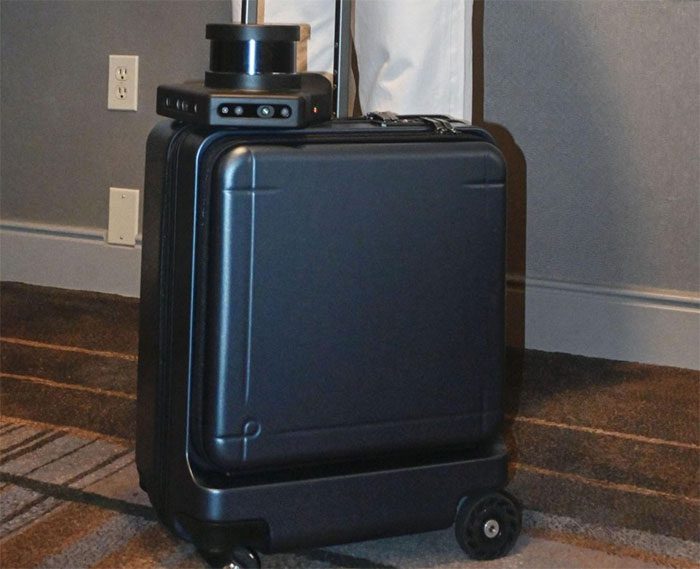A research group in collaboration with four Japanese companies has developed a robotic model integrated with artificial intelligence (AI) to assist visually impaired individuals in navigating easily and safely.
Designed like a carry-on suitcase, this new device is known as the “AI Suitcase.” The technology incorporates touch-sensitive sensors on the pull handle, a depth-sensing camera, and a voice control device that can be connected to a smartphone. Thanks to its large wheels and powerful internal motor, users can maneuver this device across outdoor terrains.

AI Suitcase device. (Photo: Kyodo).
In March, this groundbreaking technology underwent its first public trial at a hotel in California, USA.
The trial garnered significant public interest, sparking discussions about potential future applications of this technology.
Users simply need to grip the pull handle of this four-wheeled carry-on device. The device then serves as a “guide.” When it detects an obstacle, the sensor system identifies the presence of the barrier ahead and alerts the device to stop.
Compared to navigation applications integrated into smartphones, the “AI Suitcase” offers superior features, providing a higher level of safety for users while helping them become more aware of their surroundings during movement. Additionally, the integrated sensor system in this new technology allows users to move steadily without facing difficulties or interruptions.
The concept for this new technology comes from Chieko Asakawa, a visually impaired engineer from Japan, who currently works as a distinguished engineer at IBM and is the Director of the National Museum of Emerging Science and Innovation in Japan. Furthermore, four companies are collaborating to develop this product, including Omron Corporation, which specializes in electronic equipment and is headquartered in Kyoto.
In addition to the testing site in the USA, Ms. Asakawa and the product development team have conducted a series of tests in Tokyo. As this technology is launched in both Japan and abroad, the development team hopes that users will be able to operate the device through an application installed on their smartphones.
According to a survey by the Japanese Ophthalmological Society, the total number of visually impaired individuals in Japan has reached approximately 1.64 million.


















































